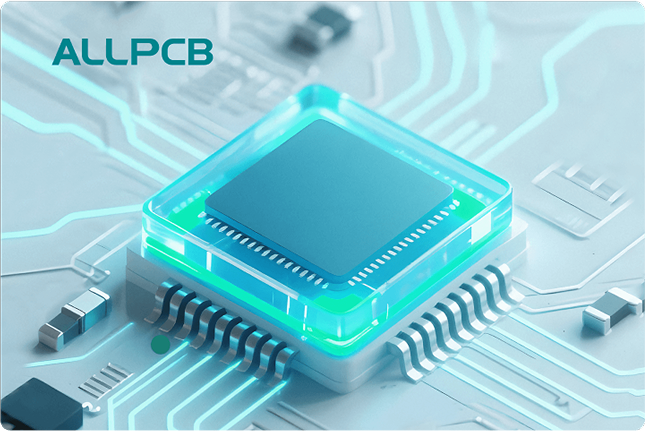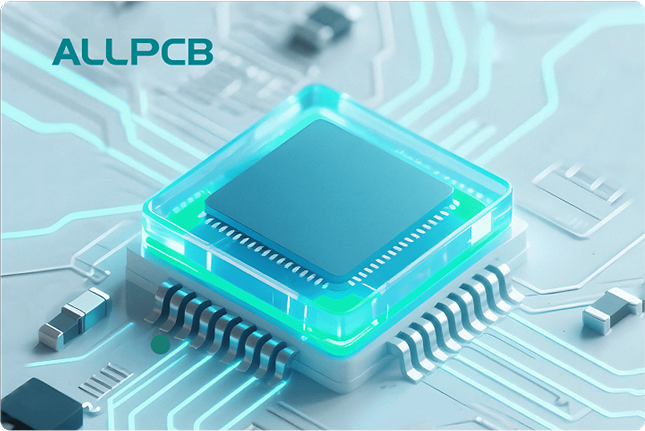Are you looking to dive into the world of smart home automation with a hands-on, beginner-friendly project? Using relays with microcontrollers like Arduino or Raspberry Pi is a fantastic way to start controlling home appliances remotely or automatically. Whether you're interested in Arduino relay control, Raspberry Pi relay interface, or setting up a home automation relay setup, this guide will walk you through the basics, step by step. With a focus on microcontroller relay circuits and low voltage relay control, you'll learn how to build a simple system to automate lights, fans, or other devices safely and efficiently.
In this comprehensive blog post, we'll cover everything from the fundamentals of relays and microcontrollers to practical examples of building your own smart home automation system. Let's get started on this exciting DIY journey!
What Are Relays and Microcontrollers in Smart Home Automation?
Before diving into the technical setup, let's break down the core components of a DIY smart home automation project. A relay is an electrically operated switch that allows a low-power signal from a microcontroller to control a high-power device, such as a light bulb or a motor. This makes relays essential for safely managing household appliances that operate on 110V or 220V AC power using a low-voltage signal, typically 5V or 3.3V, from a microcontroller.
Microcontrollers, like Arduino and Raspberry Pi, are small computing devices that act as the brain of your automation system. They process inputs (like sensor data or user commands) and send outputs (like signals to a relay) to control devices. For beginners, these platforms are ideal because of their affordability, extensive community support, and ease of use in projects involving low voltage relay control.
Why Use Relays with Microcontrollers for Home Automation?
Relays offer a safe and effective way to bridge the gap between the low-voltage world of microcontrollers and the high-voltage world of home appliances. Here are a few reasons why this combination is perfect for a home automation relay setup:
- Safety: Relays isolate the high-voltage circuit from the low-voltage microcontroller, preventing damage to the board and ensuring user safety.
- Versatility: With relays, you can control a wide range of devices, from lights to water pumps, using simple digital signals.
- Cost-Effectiveness: Relay modules and microcontrollers are affordable, often costing less than $10 for a basic relay module and around $20–$35 for an entry-level microcontroller board.
- Scalability: You can start with a single relay and expand to multiple relays as your project grows, automating more devices in your home.
Getting Started: Tools and Components You’ll Need
To begin your journey into smart home automation with microcontroller relay circuits, gather the following components and tools. These are widely available online or at local electronics stores:
- Microcontroller Board: An Arduino Uno (operates at 5V) or Raspberry Pi (operates at 3.3V) are great starting points for beginners.
- Relay Module: A single-channel or multi-channel relay module rated for 5V or 3.3V input and capable of handling 10A at 250V AC (common for household appliances).
- Jumper Wires: For connecting the microcontroller to the relay module.
- Power Supply: Ensure you have a suitable power source for your microcontroller (USB or DC adapter) and a separate power supply if needed for the relay module.
- Appliance to Control: Start with something simple like a desk lamp or small fan rated within the relay’s specifications.
- Breadboard (Optional): Useful for prototyping and organizing connections.
- Basic Tools: Screwdrivers, wire cutters, and a multimeter for safety checks and troubleshooting.
Understanding Relay Modules for Low Voltage Control
Relay modules designed for low voltage relay control typically have three main terminals for connection:
- VCC: Connects to the power supply of the microcontroller (5V for Arduino, 3.3V for Raspberry Pi).
- GND: Connects to the ground pin of the microcontroller.
- IN (Input): Connects to a digital pin on the microcontroller to receive the control signal.
On the high-voltage side, relays have terminals labeled as Normally Open (NO), Normally Closed (NC), and Common (COM). For most home automation projects, you’ll use the NO terminal, which closes the circuit when the relay is activated, allowing current to flow to the appliance.
A typical 5V relay module can handle loads up to 10A at 250V AC, which is sufficient for controlling devices like lights (typically 0.5A–2A at 110V) or small motors. Always check the relay’s datasheet to ensure it matches your appliance’s power requirements.
Step-by-Step Guide to Arduino Relay Control
Let’s walk through a simple project to control a light bulb using Arduino relay control. This setup will turn the light on and off with a basic program.
Step 1: Wiring the Circuit
- Connect the VCC pin of the relay module to the 5V pin on the Arduino Uno.
- Connect the GND pin of the relay to the GND pin on the Arduino.
- Connect the IN pin of the relay to a digital pin on the Arduino, such as pin 7.
- On the high-voltage side, connect the Common (COM) terminal of the relay to one wire of the power source for the light bulb. Connect the Normally Open (NO) terminal to the light bulb’s input wire. Ensure the other wire of the light bulb is connected to the power source to complete the circuit.
Step 2: Writing the Code
Upload the following code to your Arduino using the Arduino IDE. This program will turn the relay on for 5 seconds, then off for 5 seconds, repeating indefinitely.
int relayPin = 7;
void setup() {
pinMode(relayPin, OUTPUT);
}
void loop() {
digitalWrite(relayPin, HIGH); // Activate relay (turn on light)
delay(5000); // Wait for 5 seconds
digitalWrite(relayPin, LOW); // Deactivate relay (turn off light)
delay(5000); // Wait for 5 seconds
}
Step 3: Testing and Safety
After uploading the code, power on the Arduino and observe the relay clicking on and off every 5 seconds, controlling the light. Always double-check connections and ensure no exposed wires are present when dealing with high-voltage circuits. Use a multimeter to verify that no voltage is leaking to the low-voltage side (should be 0V between relay GND and microcontroller GND).
Building a Raspberry Pi Relay Interface
If you prefer using a Raspberry Pi for your Raspberry Pi relay interface, the process is similar but requires attention to the 3.3V logic level of the Pi’s GPIO pins compared to Arduino’s 5V. Many relay modules support 3.3V input, but confirm this in the module’s specifications.
Step 1: Wiring the Circuit
- Connect the VCC pin of the relay module to the 3.3V pin on the Raspberry Pi.
- Connect the GND pin of the relay to a GND pin on the Pi.
- Connect the IN pin of the relay to a GPIO pin, such as GPIO 18.
- Wire the high-voltage side to the appliance as described in the Arduino section.
Picture Placement Suggestion: Add a wiring diagram or photo of the Raspberry Pi connected to a relay module here. ALT Text: "Raspberry Pi relay interface setup for smart home automation"
Step 2: Writing the Code
Use Python to control the relay with the Raspberry Pi. Install the GPIO library if needed by running pip install RPi.GPIO in the terminal. Then, save and run the following script:
import RPi.GPIO as GPIO
import time
relay_pin = 18
GPIO.setmode(GPIO.BCM)
GPIO.setup(relay_pin, GPIO.OUT)
try:
while True:
GPIO.output(relay_pin, GPIO.HIGH) # Turn on relay
time.sleep(5) # Wait 5 seconds
GPIO.output(relay_pin, GPIO.LOW) # Turn off relay
time.sleep(5) # Wait 5 seconds
except KeyboardInterrupt:
GPIO.cleanup()
Step 3: Testing the Setup
Run the script and ensure the relay toggles every 5 seconds. If the relay does not respond, check if it supports 3.3V input—some modules require 5V, which may need a level shifter or external power supply for the relay coil.
Expanding Your Home Automation Relay Setup
Once you’ve mastered controlling a single device, scale up your home automation relay setup with these ideas:
- Multi-Channel Relays: Use a 4-channel or 8-channel relay module to control multiple appliances simultaneously. Connect each input pin to a different digital or GPIO pin on your microcontroller.
- Wireless Control: Add a Bluetooth or Wi-Fi module to your setup for remote control via a smartphone app. For Arduino, consider an ESP8266 module; for Raspberry Pi, use its built-in Wi-Fi (on models like the Pi 3 or 4).
- Sensors: Integrate sensors like motion detectors or temperature sensors to automate devices based on environmental changes. For example, a PIR motion sensor can trigger a relay to turn on lights when someone enters a room.
Common Challenges and Troubleshooting Tips
As a beginner working with microcontroller relay circuits, you might encounter a few hurdles. Here are solutions to common issues:
- Relay Not Switching: Check if the relay module’s input voltage matches your microcontroller (5V or 3.3V). Measure the voltage at the IN pin with a multimeter—it should toggle between 0V and the input voltage when activated.
- Insufficient Power: If the microcontroller struggles to power the relay, use an external power supply for the relay module while keeping a common ground with the microcontroller.
- High-Voltage Safety: Never touch exposed wires when the high-voltage side is powered. Use insulated connectors and enclosures to house your project.
Tips for Designing Reliable Microcontroller Relay Circuits
To ensure your microcontroller relay circuit operates reliably over time, follow these best practices:
- Use Flyback Diodes: If controlling inductive loads like motors, add a diode across the relay coil to protect the microcontroller from voltage spikes.
- Check Current Ratings: Ensure the relay’s current rating exceeds the appliance’s requirements by at least 20%. For example, a 2A load should use a relay rated for 2.5A or higher.
- Heat Management: Relays can generate heat under continuous high loads. Mount them in a well-ventilated enclosure if running for extended periods.
Conclusion: Start Your Smart Home Journey Today
Building a DIY smart home automation system using relays and microcontrollers is an achievable and rewarding project for beginners. Whether you’re exploring Arduino relay control, setting up a Raspberry Pi relay interface, or designing a full home automation relay setup, the skills you gain will open doors to countless creative possibilities. By focusing on low voltage relay control and safe microcontroller relay circuits, you can automate your home while ensuring safety and reliability.
Start small with a single relay and a light bulb, then expand your system with more channels, sensors, and wireless capabilities. With the resources and steps provided in this guide, you’re well on your way to transforming your living space into a smart home. Dive in, experiment, and enjoy the process of creating something truly useful with your own hands!
 ALLPCB
ALLPCB







